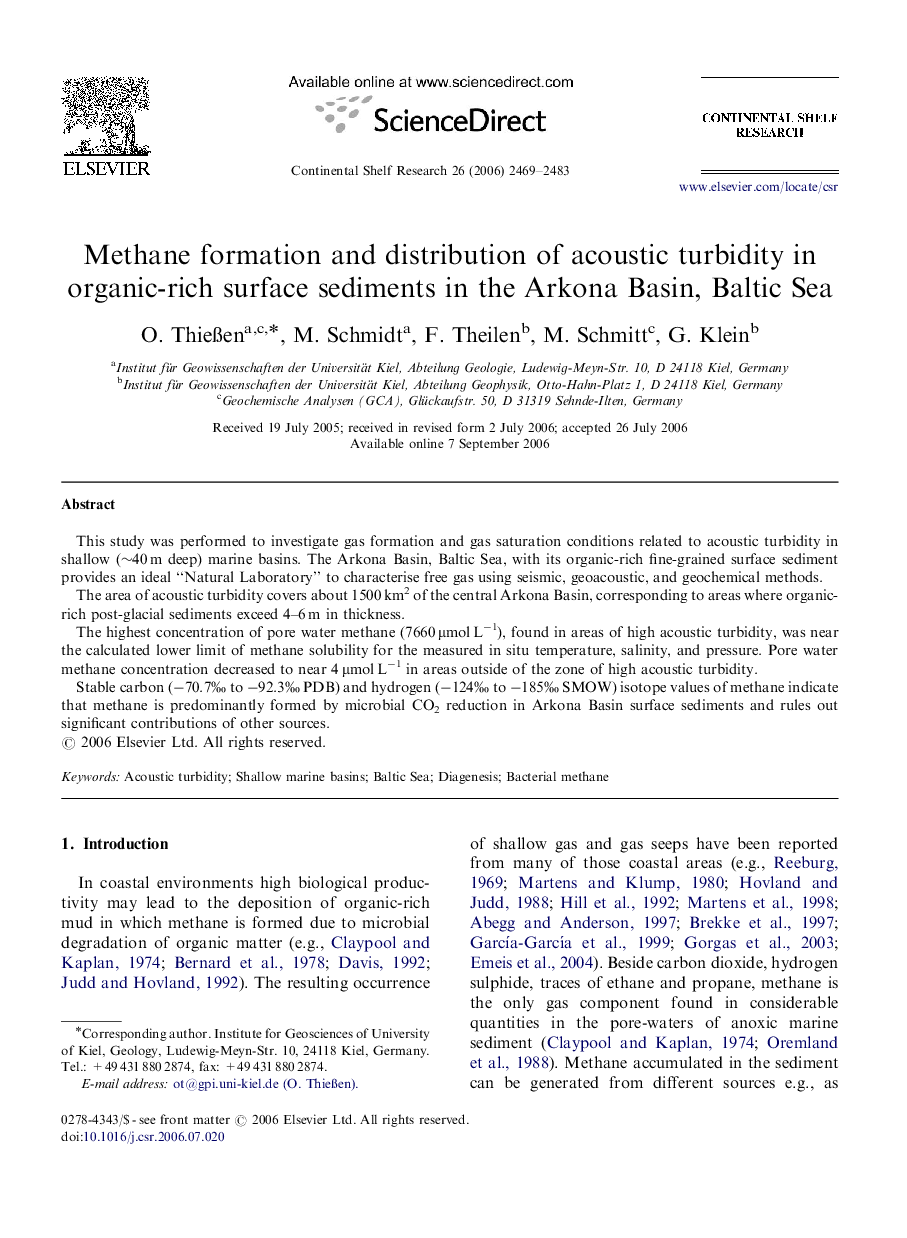| Article ID | Journal | Published Year | Pages | File Type |
|---|---|---|---|---|
| 4533942 | Continental Shelf Research | 2006 | 15 Pages |
This study was performed to investigate gas formation and gas saturation conditions related to acoustic turbidity in shallow (∼40 m deep) marine basins. The Arkona Basin, Baltic Sea, with its organic-rich fine-grained surface sediment provides an ideal “Natural Laboratory” to characterise free gas using seismic, geoacoustic, and geochemical methods.The area of acoustic turbidity covers about 1500 km2 of the central Arkona Basin, corresponding to areas where organic-rich post-glacial sediments exceed 4–6 m in thickness.The highest concentration of pore water methane (7660 μmol L−1), found in areas of high acoustic turbidity, was near the calculated lower limit of methane solubility for the measured in situ temperature, salinity, and pressure. Pore water methane concentration decreased to near 4 μmol L−1 in areas outside of the zone of high acoustic turbidity.Stable carbon (−70.7‰ to −92.3‰ PDB) and hydrogen (−124‰ to −185‰ SMOW) isotope values of methane indicate that methane is predominantly formed by microbial CO2 reduction in Arkona Basin surface sediments and rules out significant contributions of other sources.
